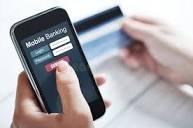An overview
You can use your smartphone in 2023 to access a wide range of financial services. Learn more about the advantages of mobile banking by reading this article.

Over the past few years, mobile banking has progressively grown in popularity. If you have a smartphone, you can use it to access several financial services, pay bills, send and receive money, and check your balance. Transaction rules are quite transparent, and fees are fairly reasonable. We’ll attempt to explain the essence and key advantages of mobile banking in this article.
WHAT IS THE RULE OF MOBILE BANKING? How Does It Work?
Before the Internet became widely used, customers had to go to their bank’s physical branches or ATMs to obtain cash, send money to a third party, apply for a loan, or use other services. By using the website or mobile app for your bank, you can save a ton of time and work today. You may access a user-friendly dashboard right away after entering your login and password. From there, you may complete the majority of tasks on your own.
IS ONLINE BANKING THE SAME AS MOBILE BANKING?
No. To conduct financial transactions, you must have an Internet connection, which is what the term “online” denotes. While offline, you can still use a few mobile banking services, like the ability to send money to others via SMS or USSD.
Additionally, being “mobile” refers to using a smartphone. By using your smartphone or a desktop computer to visit the website or mobile application of your banking institution, the term “online” implies that you have this option.
SERVICES OF MOBILE BANKING TYPES
You should typically have access to the following services:
Account specifics: You can browse your transaction history, obtain a mini account statement, check your balance, monitor your term deposits, access investment statements, manage your insurance policies, and view loan or card statements.
Transactions: You can conduct P2P payments and bill payments using mobile banking at any hour of the day and from any location.
Investments. You can manage your investment portfolio and obtain a real-time glimpse of it on the website or mobile app of your bank.
Loans: Obtaining a loan using mobile banking is more quicker and simpler than doing it at a real banking facility. Without waiting in line or gathering a substantial amount of paperwork, you can get a credit card under highly favourable terms. For instance, Fibo offers 0% interest for the first 30 days on amounts up to 1,000,000.
Content and information: You can browse financial news and learn about your bank’s most recent promotions.
Assistance programs: You may address problems, track the progress of your requests, file a grievance, and find the nearest ATMs directly through the mobile website or app.
Advantages of Mobile Banking
- Easy access. Apps and websites for banking are available around-the-clock. Although there may occasionally be outages, the banks quickly resolve all problems.
- Time: Avoid wasting time by traveling to a physical bank branch and waiting in line there. You can make investments or pay your bills directly from your smartphone when you get home from work.
- A wide range of device compatibility: Mobile banking is accessible without having to invest in a powerful and pricey smartphone.
- Speed: The quicker the website or app for your bank will function, the more modern your device is and the faster your Internet connection is. However, even if you possess a smartphone that is the most basic
- Security. Banks employ advanced technologies to make their mobile services safe and stable. Their sites and apps can withstand nearly any hacking attack.
Disadvantages of Mobile Banking
- Some services might not be available on older devices, as was previously mentioned. Additionally, the speed of your Internet connection affects their performance.
- There may be charges for mobile banking. Before registering on the bank’s website or app, learn more about them.
- Your finances and private information may be accessed by outside parties if your smartphone is lost or stolen. You should enable as many security and authentication technologies as possible to stop this (such as protecting your smartphone access with a fingerprint or password and using another protection level for the app). You should contact your bank’s support team right away in an emergency to request that they block your account and any associated cards.
- Occasionally, con artists may contact or text you in an effort to take your money. Never divulge any of your private information to anyone; instead, be watchful.
In conclusion, your comprehension of mobile banking should have improved as a result of this article. Only having a bank account and a smartphone are required to use this kind of service. You will always have access to your bank’s website or app, allowing you to send and receive money, pay bills, request loans, and perform other tasks.